This new breed of PC-based power management application should have the capability to integrate an active blueprint of the system including system topology, engineering parameters, and other pertinent information with timesynchronized-data acquired for the purpose of depicting the actual operation of the system.
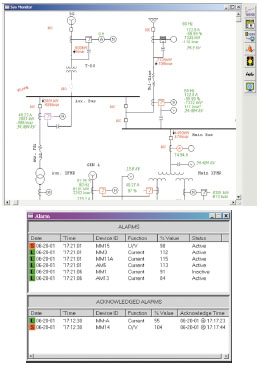
This article will explore the vital features and benefits of the modern power management software.
Intelligent Monitoring
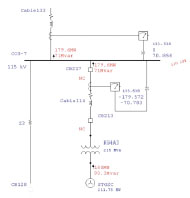
System monitoring is the base function for any power management software. In addition, seamless integration with metering devices, data acquisition, and archiving systems are essential to monitoring software. Real-time or snapshot data are linked to an online model of the system for proper presentation of actual operating status.
All this information should be accessible to the system operator through advance man-machine interfaces such as an interactive one-line diagram that provides logical system-wide view.
The next step is to process the telemetry data and determine the missing or faulty meter values using advance techniques such as State and Load Estimator (SLE).
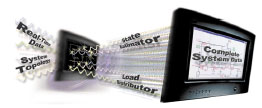
The system should also be able to compensate for absence of physical meters by providing virtual metering of devices. Graphic watch windows summarize and record alarm conditions in case of unusual activity and provide continuous visual monitoring of user-selected parameters in any mode of operation. This provision would allow early detection and display of problems before a critical failure takes place.
Online Simulation
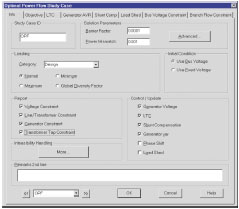
Take the intelligent monitoring a step further with the ability to analyze the acquired data. System engineers and operators must have instant access to energy information and analysis tools that allow them to predict an outcome before actions are taken on the system.
In order to design, operate, and maintain a power system, one must first understand its behavior. The operator must have first hand experience with the system under various operating conditions to effectively react to changes. This will avoid the inadvertent plant outage caused by human error and equipment overload. The cost of an unplanned outage can be staggering.
See Figure 1 for a graph of Estimated Production Loss $ per Outage Event for Large (50 MW) Industrial Users. The graph shows the increasing loss in revenue for longer outage times.
Estimated Production Loss $ per Outage Event
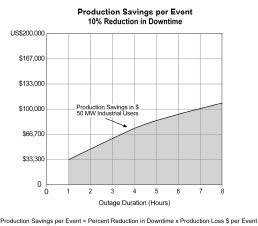
Figure 1: Production Loss per Event = $/kW x Recorded Peak kW
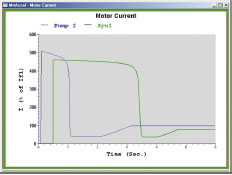 For industrial and generation facilities that utilize power system analysis applications, the ability to perform system studies and simulate “What If ” scenarios using real-time operating data on demand is of the essence. For example, using real-time data, the system operator could iteratively simulate the impact of starting a large motor without actually starting the motor.
For industrial and generation facilities that utilize power system analysis applications, the ability to perform system studies and simulate “What If ” scenarios using real-time operating data on demand is of the essence. For example, using real-time data, the system operator could iteratively simulate the impact of starting a large motor without actually starting the motor.
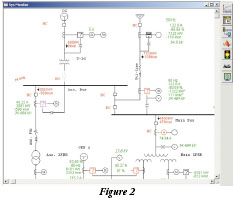 The ability to recover from a system disturbance depends on the time it takes to establish the cause of problem and take remedial action. This requires a fast and complete review and analysis of the sequence of events prior to the disturbance. A power management software should assist your operation and engineering staff to quickly identify the cause of operating problems and determine where energy costs can be reduced. The software should also be able to reconstruct exact system conditions to check for operator actions and probe for alternative actions after-the-fact. This important tool serves as an ongoing learning process for the operator.
The ability to recover from a system disturbance depends on the time it takes to establish the cause of problem and take remedial action. This requires a fast and complete review and analysis of the sequence of events prior to the disturbance. A power management software should assist your operation and engineering staff to quickly identify the cause of operating problems and determine where energy costs can be reduced. The software should also be able to reconstruct exact system conditions to check for operator actions and probe for alternative actions after-the-fact. This important tool serves as an ongoing learning process for the operator.
Besides reducing losses and improving data gathering capability, such an application should assist in increase plant reliability and control costs. The event playback feature is especially useful for root cause and effect investigations, improvement of system operations, exploration of alternative actions, and replay of "What If" scenarios. Event playback capability translates into savings. These savings for a typical 50 MW plant are illustrated in Figure 2. For example, a conservative estimate of 10% reduction in downtime for an outage that lasts an hour yields about $33,000 in savings.
Online Control
An advanced power management system should provide the options for full remote control to the system elements such as motors, generators, breakers, load tap changers, and other protection devices directly or through existing Supervisory Control and Data Acquisition (SCADA) system.
In addition, the software should provide user-definable actions that can be added or superimposed on the existing system for automating system control. This is similar to adding PC-based processors/controllers (kV, kW, kvar, PF, etc.) or simple breaker interlocks to any part of the system by means of the software.
Supervisory and Advisory Controls
State-of-the-art supervisory and advisory control capabilities should be used to control and optimize in real-time various parameters throughout the system. Using optimization algorithms, the user could program the power management system (i.e., assist energy consumers by automatically operating their system to minimize system losses, reduce peak load consumption, or minimize control adjustment). For energy producers, this energy management system could be set up to minimize generation fuel costs, and optimize system operation.
In a recent study performed for a large industrial facility (150MVA), advanced optimization algorithms, native to the energy management system, were utilized to reduce real and reactive power losses. Assuming a conservative power loss reduction of only 0.1% at an average electrical energy cost of US$0.103/kWh, an energy management system would yield savings of more than US$135,000 per year and would pay for itself through the immediate realization of savings in operating and maintenance costs.
Dynamic Load Shedding
A major disturbance in an electrical power system may result in certain areas becoming isolated and experiencing low frequency and voltage, which can result in an unstable operation. The power management system should have the intelligence to initiate load shedding based on a user-defined Load Priority Table (LPT) and a pre-constructed Stability Knowledge Base (SKB) in response to electrical or mechanical disturbances in the system. Load shedding schemes by conventional frequency relays are generally a static control with fixed frequency settings. Based on Neural Networks, a power management system would be able to adapt to all real-time situations and provide a true dynamic load shedding control. This would allow the operator to optimize load preservation, reduce downtime for critical loads, and simulate/test the load shedding recommendations.
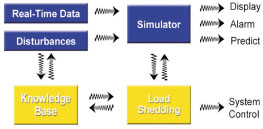
Conclusion
A standard power management system evaluates collected data in a nonelectrical system environment without recognizing the interdependencies of equipment. Extending the power monitoring system by equipping it with an appropriate electrical system context, simulation modules, and playback routines will provide the system operator and engineer with a powerful new set of tools. Using these tools, the user can accurately predict the behavior of the electrical system in response to a variety of changes. The playback of recorded message logs into the simulator-equipped monitoring system provides the operator with an invaluable means of exploring the effects of alternative actions during historical events. Simulation techniques readily extend into power system control and can be used to perform system automation and load shedding functions.
Finally, all of these capabilities should be included in one application with the flexibility and compatibility that allows you to expand and upgrade your power management system as your needs grow.
Operation Technology, Inc. develops and markets a full range of real-time simulation, monitoring and supervisory control services, including design, engineering, and consulting services. The company’s premier real-time simulation platform, the ETAP® PowerStation® Management System (PSMS™), offers energy efficiency improvements, dynamic load shedding, and automatic supervisory control to help customers minimize energy costs.







